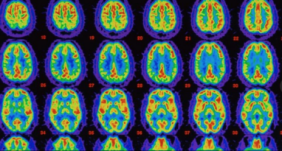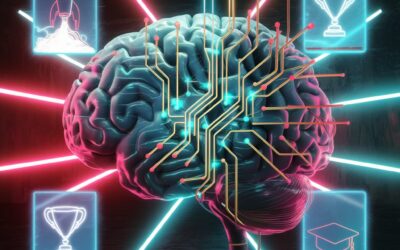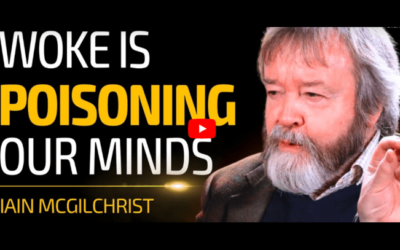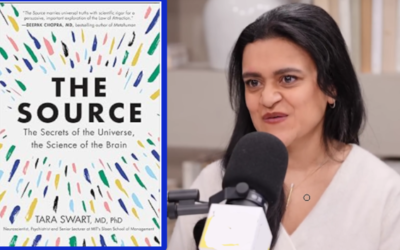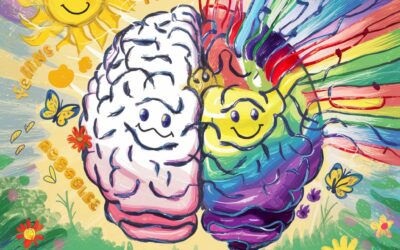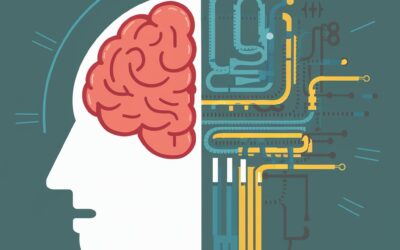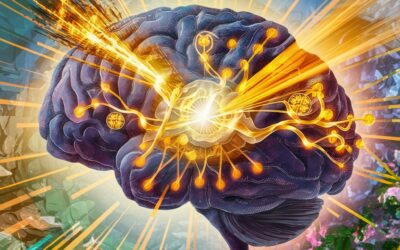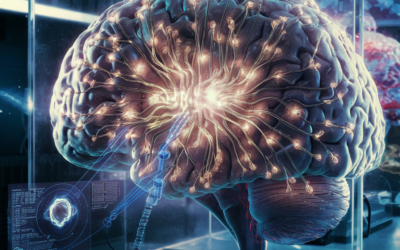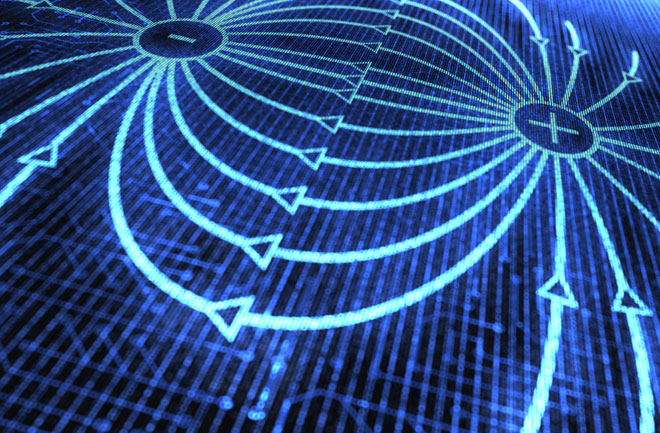References
Agren, T. (2014). Human reconsolidation: A reactivation and update. Brain Research Bulletin, 105, 70– 82. doi:10.1016/j.brainresbull.2013.12.010
Alexander, F., & French, T. M. (1946). Psychoanalytic therapy: Principles and application. New York, NY: Ronald Press.
Baker, K. D., McNally, G. P., & Richardson, R. (2013). Memory retrieval before or after extinction reduces recovery of fear in adolescent rats. Learning & Memory, 20, 467–473. doi:10.1101/lm.031989.113
Balderas, I., Rodriguez-Ortiz, C. J., & BermudezRattoni, F. (2013). Retrieval and reconsolidation of object recognition memory are independent processes in the perirhinal cortex. Neuroscience, 253, 398–405. doi:10.1016/j.neuroscience.2013.09.001.
Barreiro, K. A, Suárez, L. D., Lynch, V. M., Molina, V. A., & Delorenzi, A. (2013). Memory expression is independent of memory labilization/ reconsolidation. Neurobiology of Learning & Memory, 106, 283–291. doi:10.1016/j.nlm.2013.10.006
Boccia, M. M., Blake, M. G., Acosta, G. B., & Baratti, C. M. (2006). Post-retrieval effects of ICV infusions of hemicholinium in mice are dependent on the age of the original memory. Learning & Memory, 13, 376–381. doi:10.1101/lm.150306
Bos, M. G. N., Beckers, T., & Kindt, M. (2014). Noradrenergic blockade of memory reconsolidation: A failure to reduce conditioned fear responding. Frontiers of Behavioral Neuroscience, 8, 1–8. doi:10.3389/fnbeh.2014.00412
Bouton, M. E. (2004). Context and behavioral processes in extinction. Learning & Memory, 11, 485– 494.
Brunet, A., Poundja, J., Tremblay, J., Bui, E., Thomas, E., Orr, S. P., . . . Pitman, R. K. (2011). Trauma reactivation under the influence of propranolol decreases posttraumatic stress symptoms and disorder: Three open-label trials. Journal of Clinical Psychopharmacology, 31, 547–550. doi:10.1097/ JCP.0b013e318222f360
Caffaro, P. A., Suarez, L. D., Blake, M. G., & Delorenzi, A. (2012). Dissociation between memory reactivation and its behavioral expression: Scopolamine interferes with memory expression without disrupting long-term storage. Neurobiology of Learning & Memory, 98, 235–245. doi:10.1016/j. nlm.2012.08.003
Cammarota, M., Bevilaqua, L. R. M., Medina, J. H., & Izquierdo, I. (2004). Retrieval does not induce reconsolidation of inhibitory avoidance memory. Learning & Memory, 11, 572–578. doi:10.1101/ lm.76804
Clark, A. (2013). Whatever next? Predictive brains, situated agents, and the future of cognitive science. Behavioral and Brain Sciences, 36, 181–204. doi:10.1017/S0140525X12000477
Clem, R. L., & Huganir, R. L. (2010). Calcium-permeable AMPA receptor dynamics mediate fear memory erasure. Science, 330, 1108–1112. doi:10.1126/ science.1195298
Coccoz, V., Maldonado, H., & Delorenzi, A. (2011). The enhancement of reconsolidation with a naturalistic mild stressor improves the expression of a declarative memory in humans. Neuroscience, 185, 61–72. doi:10.1016/j.neuroscience.2011.04.023
de-Wit, L., Machilsen, B., & Putzeys, T. (2010). Predictive coding and the neural response to predictable stimuli. The Journal of Neuroscience, 30, 8702– 8703. doi:10.1523/jneurosci.2248-10.2010
Debiec, J., Díaz-Mataix, L., Bush, D. E. A., Doyère, V., & LeDoux, J. E. (2010). The amygdala encodes specific sensory features of an aversive reinforcer. Nature Neuroscience, 13, 536–537. doi:10.1038/ nn.2520
Debiec, J., Díaz-Mataix, L., Bush, D. E. A., Doyère, V., & LeDoux, J. E. (2013). The selectivity of aversive memory reconsolidation and extinction processes depends on the initial encoding of the Pavlovian association. Learning & Memory, 20, 695–699. doi:10.1101/lm.031609.113
Debiec, J., Doyère, V., Nader, K., & LeDoux, J. E. (2006). Directly reactivated, but not indirectly reactivated, memories undergo reconsolidation in the amygdala. Proceedings of the National Academy of Sciences, 103, 3428–3433. doi:10.1073/pnas.0507168103
Debiec, J., LeDoux, J. E., & Nader, K. (2002). Cellular and systems reconsolidation in the hippocampus. Neuron, 36, 527–538. doi:10.1016/S0896- 6273(02)01001-2
Delorenzi, A., Maza, F. J., Suárez, L. D., Barreiro, K., Molina, V. A., & Stehberg, J. (2014). Memory beyond expression. Journal of Physiology (Paris), 108, 307–322. doi:10.1016/j.jphysparis.2014.07.002
Díaz-Mataix, L., Debiec, J., LeDoux, J. E., & Doyère, V. (2011). Sensory specific associations stored in the lateral amygdala allow for selective alteration of fear memories. The Journal of Neuroscience, 31, 9538–9543. doi:10.1523/jneurosci.5808-10.2011
Díaz-Mataix, L., Ruiz Martinez, R. C., Schafe, G. E., LeDoux, J. E., & Doyère, V. (2013). Detection of a temporal error triggers reconsolidation of amygdala-dependent memories. Current Biology, 23, 1–6. doi:10.1016/j.cub.2013.01.053 Duvarci, S., Mamou, C. S., & Nader, K. (2006). Extinction is not a sufficient condition to prevent fear memories from undergoing reconsolidation in the basolateral amygdala. European Journal of Neuroscience, 24, 249–260. doi:10.1111/j.1460- 9568.2006.04907.x
Duvarci, S., & Nader, K. (2004). Characterization of fear memory reconsolidation. The Journal of Neuroscience, 24, 9269–9275. doi:10.1523/jneurosci.2971-04.2004
Ecker, B. (2003, November). The hidden logic of anxiety: Look for the emotional truth behind the symptom. Psychotherapy Networker, 27(6), 38–43, 58.
Ecker, B. (2006, July). The effectiveness of psychotherapy. Keynote address, 12th Biennial Conference of the Constructivist Psychology Network, University of California, San Marcos. Transcript: www.coherencetherapy.org/files/ecker2006cpnkeynote.pdf
Ecker, B. (2008, September). Unlocking the emotional brain: Finding the neural key to transformation. Psychotherapy Networker, 32(5), 42–47, 60.
Unlocking the Emotional Brain: Eliminating Symptoms at Their Roots Using Memory Reconsolidation
Ecker, B. (2010, January). The brain’s rules for change: Translating cutting-edge neuroscience into practice. Psychotherapy Networker, 34(1), 43–45, 60.
Ecker, B. (2011, January 13). Reconsolidation: A universal, integrative framework for highly effective psychotherapy [Web log post]. Retrieved November 15, 2014, from http://bit.ly/1zjKtMr
Ecker, B. (2013, May). Unlocking the emotional brain: Memory reconsolidation, therapeutic effectiveness and the further evolution of psychotherapy. Keynote address, 49th Annual Conference of the California Association of Marriage and Family Therapists, Sacramento, California.
Ecker, B. (2014, July 14). Annals of memory reconsolidation: Lagging accounts cause confusion [Web log post]. Retrieved from http://www.neuropsychotherapist.com/annals-ofmemory-reconsolidation-lagging-accounts-causeconfusion/
Ecker, B. (2015). Using NLP for memory reconsolidation: A glimpse of integrating the panoply of psychotherapies. The Neuropsychotherapist, 10, 50–56. doi:10.12744/tnpt(10)050-056
Ecker, B., & Hulley, L. (1996). Depth oriented brief therapy: How to be brief when you were trained to be deep, and vice versa. San Francisco, CA: JosseyBass.
Ecker, B., & Hulley, L. (2000). The order in clinical “disorder”: Symptom coherence in depth oriented brief therapy. In R. A. Neimeyer & J. D. Raskin (Eds.), Constructions of disorder: Meaning-making frameworks for psychotherapy (pp. 63–89). Washington, DC: American Psychological Association Press.
Ecker, B., & Hulley, L. (2011). Coherence therapy practice manual and training guide. Oakland, CA: Coherence Psychology Institute. Online: www.coherencetherapy.org/ resources/manual.htm
Ecker, B., Hulley, L., & Ticic, R. (in press). Minding the findings: Let’s not miss the message of memory reconsolidation research for psychotherapy. Behavioral and Brain Sciences.
Ecker, B., Ticic, R., & Hulley, L. (2012). Unlocking the emotional brain: Eliminating symptoms at their roots using memory reconsolidation. New York, NY: Routledge.
Ecker, B., Ticic, R., & Hulley, L. (2013a, April). A primer on memory reconsolidation and its psychotherapeutic use as a core process of profound change. The Neuropsychotherapist, 1, 82–99. doi:10.12744/ tnpt(1)082-099 Ecker, B., Ticic, R., & Hulley, L. (2013b, July). Unlocking the emotional brain: Is memory reconsolidation the key to transformation? Psychotherapy Networker, 37(4), 18–25, 46–47.
Ecker, B., & Toomey, B. (2008). Depotentiation of symptom-producing implicit memory in coherence therapy. Journal of Constructivist Psychology, 21, 87–150.
Eisenberg, M., & Dudai, Y. (2004). Reconsolidation of fresh, remote, and extinguished fear memory in Medaka: Old fears don’t die. European Journal of Neuroscience, 20, 3397–3403. doi:10.1111/j.1460- 9568.2004.03818.x
Eisenberg, M., Kobilo, T., Berman, D. E., & Dudai, Y. (2003). Stability of retrieved memory: Inverse correlation with trace dominance. Science, 301, 1102– 1104. doi:10.1126/science.1086881
Exton-McGuinness, M. T. J., Lee, J. L. C., & Reichelt, A. C. (2015). Updating memories: The role of prediction errors in memory reconsolidation. Behavioural Brain Research, 278, 375–384. doi:10.1016/j. bbr.2014.10.011
Exton-McGuinness, M. T. J., Patton, R. C., Sacco, L. B., & Lee, J. L. C. (2014). Reconsolidation of a welllearned instrumental memory. Learning & Memory, 21, 468–477. doi:10.1101/lm.035543.114
Flavell, C. R., & Lee, J. L. C. (2013). Reconsolidation and extinction of an appetitive pavlovian memory. Neurobiology of Learning and Memory,104, 25– 31. doi:10.1016/j.nlm.2013.04.009
Foa, E. B., & McNally, R. J. (1996). Mechanisms of change in exposure therapy. In R. M. Rapee (Ed.), Current controversies in the anxiety disorders (pp. 329–343). New York, NY: Guilford Press.
Forcato, C., Argibay, P. F., Pedreira, M. E., & Maldonado, H. (2009). Human reconsolidation does not always occur when a memory is retrieved: The relevance of the reminder structure. Neurobiology of Learning and Memory, 91, 50–57. doi:10.1016/j. nlm.2008.09.011
Forcato, C., Burgos, V. L., Argibay, P. F., Molina, V. A., Pedreira, M. E., & Maldonado, H. (2007). Reconsolidation of declarative memory in humans. Learning & Memory, 14, 295–303. doi:10.1101/ lm.486107
Forcato, C., Fernandeza, R. S., & Pedreira, M. E. (2014). Strengthening a consolidated memory: The key role of the reconsolidation process. Journal of Physiology (Paris), 108, 323–333. doi:10.1016/j. jphysparis.2014.09.001
Forcato, C., Rodríguez, M. L. C., Pedreira, M. E., & Maldonado, H. (2010). Reconsolidation in humans opens up declarative memory to the entrance of new information. Neurobiology of Learning and Memory, 93, 77–84. doi:10.1016/j.nlm.2009.08.006
Frankland, P. W., Ding, H. K., Takahashi, E., Suzuki, A., Kida, S., & Silva, A. J. (2006). Stability of recent and remote contextual fear memory. Learning & Memory, 13, 451–457. doi:10.1101/lm.183406
Frenkel, L., Maldonado, H., & Delorenzi, A. (2005). Memory strengthening by a real-life episode during reconsolidation: An outcome of water deprivation via brain angiotensin II. European Journal of Neuroscience, 22, 1757–1766. doi:10.1111/j.1460- 9568.2005.04373.x
Friston, K. (2010). The free-energy principle: A unified brain theory? Nature Reviews Neuroscience, 11, 127–138. doi:10.1038/nrn2787
Galluccio, L. (2005). Updating reactivated memories in infancy: I. Passive- and active-exposure effects. Developmental Psychobiology, 47, 1–17. doi:10.1002/dev.20073
Gray, R. M., & Liotta, R. F. (2012). PTSD: Extinction, reconsolidation, and the visual-kinesthetic dissociation protocol. Traumatology, 18, 3–16. doi:10.1177/1534765611431835
Hernandez. P. J., & Kelley, A. E. (2004). Long-term memory for instrumental responses does not undergo protein synthesis-dependent reconsolidation upon retrieval. Learning & Memory, 11, 748–754. doi:10.1101/lm.84904
Högberg, G., Nardo, D., Hällström, T., & Pagani, M. (2011). Affective psychotherapy in post-traumatic reactions guided by affective neuroscience: Memory reconsolidation and play. Psychology Research and Behavior Management, 4, 87–96. doi:10.2147/ PRBM.S10380
Hupbach, A., Gomez, R., Hardt, O., & Nadel, L. (2007). Reconsolidation of episodic memories: A subtle reminder triggers integration of new information. Learning & Memory, 14, 47–53. doi:10.1101/ lm.365707
Hupbach, A., Gomez, R., & Nadel, L. (2009). Episodic memory reconsolidation: Updating or source confusion? Memory, 17, 502–510. doi:10.1080/09658210902882399
Inda, M. C., Muravieva, E. V., & Alberini, C. M. (2011). Memory retrieval and the passage of time: From reconsolidation and strengthening to extinction. The Journal of Neuroscience, 31, 1635–1643. doi:10.1523/jneurosci.4736-10.2011
Jacobs, N. S., Allen, T. A., Nguyen, N., & Fortin, N. J.(2013). Critical role of the hippocampus in memory for elapsed time. The Journal of Neuroscience, 33, 13888–13893. doi:10.1523/jneurosci.1733-13.2013
Jarome, T. J., Kwapis, J. L., Werner, C. T., Parsons, R. G., Gafford, G. M., & Helmstetter, F. J. (2012). The timing of multiple retrieval events can alter GluR1 phosphorylation and the requirement for protein synthesis in fear memory reconsolidation. Learning & Memory, 19, 300–306. doi:10.1101/ lm.024901.111
Judge, M. E., & Quartermain D. (1982). Alleviation of anisomycin-induced amnesia by pre-test treatment with lysine-vasopressin. Pharmacology Biochemistry & Behavior, 16, 463–466. doi:10.1016/0091- 3057(82)90453-1
Kindt, M., Soeter, M., & Vervliet, B. (2009). Beyond extinction: Erasing human fear responses and preventing the return of fear. Nature Neuroscience, 12, 256–258. doi:10.1038/nn.2271
Kirtley, A., & Thomas, K. L. (2010). The exclusive induction of extinction is gated by BDNF. Learning & Memory, 17, 612–619. doi:10.1101/lm.1877010
Lane, R. D., Ryan, L., Nadel, L., & Greenberg, L. (in press). Memory reconsolidation, emotional arousal and the process of change in psychotherapy: New insights from brain science. Behavioral and Brain Sciences. doi:10.1017/S0140525X14000041.
LeDoux, J. E., Romanski, L., & Xagoraris, A. (1989). Indelibility of subcortical emotional memories. Journal of Cognitive Neuroscience, 1, 238–243. doi:10.1162/jocn.1989.1.3.238 Lee, C. W., Taylor, G., & Drummond, P. D. (2006). The active ingredient in EMDR: Is it traditional exposure or dual focus of attention? Clinical Psychology and Psychotherapy, 13, 97–107. doi:10.1002/ cpp.479
Lee, J. L. (2009). Reconsolidation: Maintaining memory relevance. Trends in Neuroscience, 32, 413–420. doi:10.1016/j.tins.2009.05.002
Lee, J. L., Milton, A. L., & Everitt, B. J. (2006). Reconsolidation and extinction of conditioned fear: Inhibition and potentiation. The Journal of Neuroscience, 26, 10051–10056. doi:10.1523/jneurosci.2466-06.2006
Lee, S. H., Choi, J. H., Lee, N., Lee, H. R., Kim, J. I., Yu, N. K., . . . Kaang, B. K. (2008). Synaptic protein degradation underlies destabilization of retrieved fear memory. Science, 319, 1253–1256. doi:10.1126/science.1150541
Lewis, D. J. (1979). Psychobiology of active and inactive memory. Psychological Bulletin, 86, 1054–1083.
Lewis, D., Bregman, N. J., & Mahan, J. (1972). Cuedependent amnesia in rats. Journal of Comparative and Physiological Psychology, 81, 243–247. doi:10.1037/h0033524
Lewis, D. J., & Bregman, N. J. (1973). Source of cues for cue-dependent amnesia in rats. Journal of Comparative and Physiological Psychology, 85, 421–426. doi:10.1037/h0035020
Liu, J., Zhao, L., Xue, Y., Shi, J., Suo, L., Luo, Y., . . . Lu, L. (2014). An unconditioned stimulus retrieval extinction procedure to prevent the return of fear memory. Biological Psychiatry, 76, 895–901. doi:10.1016/j.biopsych.2014.03.027
MacDonald, C. J., Lepage, K. Q., Eden, U. T., & Eichenbaum, H. (2011). Hippocampal “time cells” bridge the gap in memory for discontiguous events. Neuron, 71, 737–749. doi: 10.1016/j.neuron.2011.07.012
Mactutus, C. F., Riccio, D. C., & Ferek, J. M. (1979). Retrograde amnesia for old (reactivated) memory: Some anomalous characteristics. Science, 204, 1319–1320. doi:10.1126/science.572083
Mamiya, N., Fukushima, H., Suzuki, A., Matsuyama, Z., Homma, S., Frankland, P. W., & Kida, S. (2009). Brain region-specific gene expression activation required for reconsolidation and extinction of contextual fear memory. The Journal of Neuroscience, 29, 402–413. doi:10.1523/jneurosci.4639-08.2009
McGaugh, J. L. (1989). Involvement of hormonal and neuromodulatory systems in the regulation of memory storage. Annual Review of Neuroscience, 2, 255– 287. doi:10.1146/annurev.ne.12.030189.001351
McGaugh, J. L. (2000). Memory: A century of consolidation. Science, 287, 248–251. doi:10.1126/science.287.5451.248
McGaugh, J. L., & Roozendaal, B. (2002). Role of adrenal stress hormones in forming lasting memories in the brain. Current Opinions in Neurobiology, 12, 205–210. doi:10.1016/s0959-4388(02)00306-9
Merlo, E., Milton, A. L., Goozée, Z. Y., Theobald, D. E., & Everitt, B. J. (2014). Reconsolidation and extinction are dissociable and mutually exclusive processes: Behavioral and molecular evidence. The Journal of Neuroscience, 34, 2422–2431. doi:10.1523/jneurosci.4001-13.2014
Milad, M. R., & Quirk, J. G. (2002). Neurons in medial prefrontal cortex signal memory for fear extinction. Nature, 420, 70–74. doi:10.1038/nature01138
Milekic, M. H., & Alberini, C. M. (2002). Temporally graded requirement for protein synthesis following memory reactivation. Neuron, 36, 521–525. doi:10.1016/S0896-6273(02)00976-5
Mileusnic, R., Lancashire, C. L., & Rose, S. P. R. (2005). Recalling an aversive experience by day-old chicks is not dependent on somatic protein synthesis. Learning & Memory, 12, 615–619. doi:10.1101/ lm.38005
Milner, B., Squire, L. R., & Kandel, E. R. (1998). Cognitive neuroscience and the study of memory. Neuron, 20, 445–468. doi:10.1016/s0896-6273(00)80987-3
Misanin, J. R., Miller, R. R., & Lewis, D. J. (1968). Retrograde amnesia produced by electroconvulsive shock following reactivation of a consolidated memory trace. Science, 16, 554–555. doi:10.1126/ science.160.3827.554
Monfils, M.-H., Cowansage, K. K., Klann, E., & LeDoux, J. E. (2009). Extinction-reconsolidation boundaries: Key to persistent attenuation of fear memories. Science, 324, 951–955. doi:10.1126/science.1167975
Morris, R. G., Inglis, J., Ainge, J. A., Olverman, H. J., Tulloch, J., Dudai, Y., & Kelly, P. A. (2006). Memory reconsolidation: Sensitivity of spatial memory to inhibition of protein synthesis in dorsal hippocampus during encoding and retrieval. Neuron, 50, 479–489. doi:10.1016/j.neuron.2006.04.012
Myers, K. M., & Davis, M. (2002). Behavioral and neural analysis of extinction. Neuron, 36, 567–584. Nader, K. (2003). Memory traces unbound. Trends in Neurosciences, 26, 65–72. doi:10.1016/s0166- 2236(02)00042-5
Nader, K., Schafe, G. E., & LeDoux, J. E. (2000). Fear memories require protein synthesis in the amygdala for reconsolidation after retrieval. Nature, 406, 722–726. doi:10.1038/35021052
Naya, Y., & Suzuki, W. A. (2011). Integrating what and when across the primate medial temporal lobe. Science, 333, 773–776. doi:10.1126/science.1206773
Paz, R., Gelbard-Sagiv, H., Mukamel, R., Harel, M., Malach, R., & Fried, I. (2010). A neural substrate in the human hippocampus for linking successive events. Proceedings of the National Academy of Sciences, 107, 6046–6051. doi:10.1073/ pnas.0910834107
Pedreira, M. E., & Maldonado, H. (2003). Protein synthesis subserves reconsolidation or extinction depending on reminder duration. Neuron, 38, 863– 869. doi:10.1016/S0896-6273(03)00352-0
Pedreira, M. E., Pérez-Cuesta, L. M., & Maldonado, H. (2002). Reactivation and reconsolidation of longterm memory in the crab Chasmagnathus: Protein synthesis requirement and mediation by NMDAtype glutamatergic receptors. The Journal of Neuroscience, 22, 8305–8311.
Pedreira, M. E., Pérez-Cuesta, L. M., & Maldonado, H. (2004). Mismatch between what is expected and what actually occurs triggers memory reconsolidation or extinction. Learning & Memory, 11, 579–585. doi:10.1101/lm.76904
Pérez-Cuesta, L. M., & Maldonado, H. (2009). Memory reconsolidation and extinction in the crab: Mutual exclusion or coexistence? Learning & Memory, 16, 714–721. doi:10.1101/lm.1544609
Phelps, E. A., Delgado, M. R., Nearing, K. I., & LeDoux, J. E. (2004). Extinction learning in humans: Role of the amygdala and vmPFC. Neuron, 43, 897–905. doi:10.1016/j.neuron.2004.08.042
Piaget, J. (1955). The child’s construction of reality. London: Routledge and Kegan Paul.
Pine, A., Mendelsohn, A., & Dudai, Y. (2014). Unconscious learning of likes and dislikes is persistent, resilient, and reconsolidates. Frontiers in Psychology, 5(1051), 1–13. doi:10.3389/ fpsyg.2014.01051
Pittenger, D. J., & Pavlik, W. B. (1988). Analysis of the partial reinforcement extinction effect in humans using absolute and relative comparisons of schedules. American Journal of Psychology, 101, 1–14.
Przybyslawski, J., Roullet, P., & Sara, S. J. (1999). Attenuation of emotional and nonemotional memories after their reactivation: Role of beta adrenergic receptors. The Journal of Neuroscience, 19, 6623– 6628.
Przybyslawski, J., & Sara, S. J. (1997). Reconsolidation of memory after its reactivation. Behavioural Brain Research, 84, 241–246. doi:10.1016/S0166- 4328(96)00153-2
Quirk, G. J., Likhtik, E., Pelletier, J. G., & Pare, D. (2003). Stimulation of medial prefrontal cortex decreases the responsiveness of central amygdala output neurons. The Journal of Neuroscience, 23, 8800–8807.
Quirk, G. J., Paré, D., Richardson, R., Herry, C., Monfils, M. H., Schiller, D., & Vicentic, A. (2010). Erasing fear memories with extinction training. The Journal of Neuroscience, 30, 14993–14997. doi:10.1523/jneurosci.4268-10.2010
Reichelt, A. C., & Lee, J. L. C. (2013). Memory reconsolidation in aversive and appetitive settings. Frontiers of Behavioral Neuroscience, 7, 1–18. doi:10.3389/fnbeh.2013.00118
Reichelt, A. C., Exton-McGuinness, M. T., & Lee, J. L. (2013). Ventral tegmental dopamine dysregulation prevents appetitive memory destabilisation. The Journal of Neuroscience, 33, 14205–14210. doi:10.1523/ jneurosci.1614-13.2013
Rescorla, R. A., & Wagner, A. R. (1972). A theory of Pavlovian conditioning: Variations in the effectiveness of reinforcement and nonreinforcement. In A. H. Prokasy (Ed.), Classical conditioning II: Current research and theory (pp. 64–99). New York, NY: Appleton-Century-Crofts.
Richardson, R., Riccio, D. C., & Mowrey, H. (1982). Retrograde amnesia for previously acquired Pavlovian conditioning: UCS exposure as a reactivation treatment. Physiology of Psychology, 10, 384–390.
Rodriguez-Ortiz, C. J., De la Cruz, V., Gutierrez, R., & Bermidez-Rattoni, F. (2005). Protein synthesis underlies post-retrieval memory consolidation to a restricted degree only when updated information is obtained. Learning & Memory, 12, 533–537. doi:10.1101/lm.94505
Rodriguez-Ortiz, C. J., Garcia-DeLaTorre, P., Benavidez, E., Ballesteros, M. A., & Bermudez-Rattoni, F. (2008). Intrahippocampal anisomycin infusions disrupt previously consolidated spatial memory only when memory is updated. Neurobiology of Learning and Memory, 89, 352–359. doi:10.1016/j. nlm.2007.10.004
Roozendaal, B., McEwen, B. S., & Chattarji, S. (2009). Stress, memory and the amygdala. Nature Reviews Neuroscience, 10, 423–433. doi:10.1038/nrn2651
Rossato, J. I., Bevilaqua, L. R. M., Medina, J. H., Izquierdo, I., & Cammarota, M. (2006). Retrieval induces hippocampal-dependent reconsolidation of spatial memory. Learning & Memory, 13, 431–440. doi:10.1101/lm.315206
Rossato, J. I., Bevilaqua, L. R. M., Myskiw, J. C., Medina, J. H., Izquierdo, I., & Cammarota, M. (2007). On the role of hippocampal protein synthesis in the consolidation and reconsolidation of object recognition memory. Learning & Memory, 14, 36–46. doi:10.1101/lm.422607
Roullet, P., & Sara, S. J. (1998). Consolidation of memory after its reactivation: Involvement of ß noradrenergic receptors in the late phase. Neural Plasticity, 6, 63–68. doi:10.1155/np.1998.63
Rubin, R. D. (1976). Clinical use of retrograde amnesia produced by electroconvulsive shock: A conditioning hypothesis. Canadian Journal of Psychiatry, 21, 87–90.
Rubin, R. D., Fried, R., & Franks, C. M. (1969). New application of ECT. In R. D. Rubin & C. Franks (Eds.), Advances in behavior therapy, 1968 (pp. 37– 44). New York, NY: Academic Press.
Santini, E., Ge, H., Ren, K., de Ortiz, S. P., & Quirk, G. J. (2004). Consolidation of fear extinction requires protein synthesis in the medial prefrontal cortex. The Journal of Neuroscience, 24, 5704–5710. doi:10.1523/jneurosci.0786-04.2004
Santoyo-Zedillo, M., Rodriguez-Ortiz, C. J., ChavezMarchetta, G., Bermudez-Rattoni, F., & Balderas, I. (2014). Retrieval is not necessary to trigger reconsolidation of object recognition memory in the perirhinal cortex. Learning & Memory, 21, 452–456. doi:10.1101/lm.035428.114
Sara, S. J. (2000). Retrieval and reconsolidation: Toward a neurobiology of remembering. Learning & Memory, 7, 73–84. doi:10.1101/lm.7.2.73
Schiller, D., Monfils, M.-H., Raio, C. M., Johnson, D. C., LeDoux, J. E., & Phelps, E. A. (2010). Preventing the return of fear in humans using reconsolidation update mechanisms. Nature, 463, 49–53. doi:10.1038/nature08637
Schiller, D., & Phelps, E. A. (2011). Does reconsolidation occur in humans? Frontiers of Behavioral Neuroscience, 5, 1–18. doi:10.3389/fnbeh.2011.00024
Schore, A. N. (2003). Affect dysregulation and disorders of the self. New York, NY: W.W. Norton.
Sekiguchi, T., Yamada, A., & Suzuki, H. (1997). Reactivation-dependent changes in memory states in the terrestrial slug Limax flavus. Learning & Memory, 4, 356–364. doi:10.1101/lm.4.4.356
Sevenster, D., Beckers, T., & Kindt, M. (2012). Retrieval per se is not sufficient to trigger reconsolidation of human fear memory. Neurobiology of Learning and Memory, 97, 338–345. doi:10.1016/j. nlm.2012.01.009
Sevenster, D., Beckers, T., & Kindt, M. (2013). Prediction error governs pharmacologically induced amnesia for learned fear. Science, 339, 830–833. doi:10.1126/science.1231357
Sevenster, D., Beckers, T., & Kindt, M. (2014). Prediction error demarcates the transition from retrieval,to reconsolidation, to new learning. Learning & Memory, 21, 580–584. doi:10.1101/lm.035493.114
Sibson, P. & Ticic, R. (2014, March). Remembering in order to forget. Therapy Today, 25(2), 26–29.
Siegel, D. J. (2006). An interpersonal neurobiology approach to psychotherapy. Psychiatric Annals, 36, 248–258.
Soeter, M., & Kindt, M. (2011). Disrupting reconsolidation: Pharmacological and behavioral manipulations. Learning & Memory, 18, 357–366. doi:10.1101/lm.2148511
Steinfurth, E. C. K., Kanen, J. W., Raio, C. M., Clem, R. L., Huganir, R. L., & Phelps, E. A. (2014). Young and old Pavlovian fear memories can be modified with extinction training during reconsolidation in humans. Learning & Memory, 21, 338–341. doi:10.1101/lm.033589.113
Stollhoff, N., Menzel, R., & Eisenhardt, D. (2005). Spontaneous recovery from extinction depends on the reconsolidation of the acquisition memory in an appetitive learning paradigm in the honeybee (Apis mellifera). The Journal of Neuroscience, 25, 4485–4492. doi:10.1523/jneurosci.0117-05.2005
Suzuki, A., Josselyn, S. A., Frankland, P. W., Masushige, S., Silva, A. J., & Kida, S. (2004). Memory reconsolidation and extinction have distinct temporal and biochemical signatures. The Journal of Neuroscience, 24, 4787–4795. doi:10.1523/jneurosci.5491-03.2004
Toomey, B., & Ecker, B. (2007). Of neurons and knowings: Constructivism, coherence psychology and their neurodynamic substrates. Journal of Constructivist Psychology, 20, 201–245. doi:10.1080/10720530701347860
Toomey, B., & Ecker, B. (2009). Competing visions of the implications of neuroscience for psychotherapy. Journal of Constructivist Psychology, 22, 95–140. doi:10.1080/10720530802675748 Tronson, N. C., & Taylor, J. R. (2007). Molecular mechanisms of memory reconsolidation. Nature Neuroscience, 8, 262–275. doi:10.1038/nrn2090
van der Kolk, B. (1994). The body keeps the score: Memory and the evolving psychobiology of posttraumatic stress. Harvard Review of Psychiatry, 1, 253–265. doi:10.3109/10673229409017088
Walker, M. P., Brakefield, T., Hobson, J. A., & Stickgold, R. (2003). Dissociable stages of human memory consolidation and reconsolidation. Nature, 425, 616–620. doi:10.1038/nature01930
Winters, B. D., Tucci, M. C., & DaCosta-Furtado, M. (2009). Older and stronger object memories are selectively destabilized by reactivation in the presence of new information. Learning & Memory, 16, 545–553. doi:10.1101/lm.1509909
Wood, N. E., Rosasco, M. L., Suris, A. M., Spring, J. D., Marin, M.-F., Lasko, N. B., . . . Pitman, R. K. (2015). Pharmacological blockade of memory reconsolidation in posttraumatic stress disorder: Three negative psychophysiological studies. Psychiatry Research, 225, 31–39. doi:10.1016/j.psychres.2014.09.005
Xue, Y.-X., Luo, Y.-X., Wu, P., Shi, H.-S., Xue, L.-F., Chen, C., . . . Lu, L. (2012). A memory retrievalextinction procedure to prevent drug craving and relapse. Science, 336, 241–245. doi:10.1126/science.1215070
Excerpt from International Journal of Neuropsychotherapy Volume 3 Issue 1 (2015)


